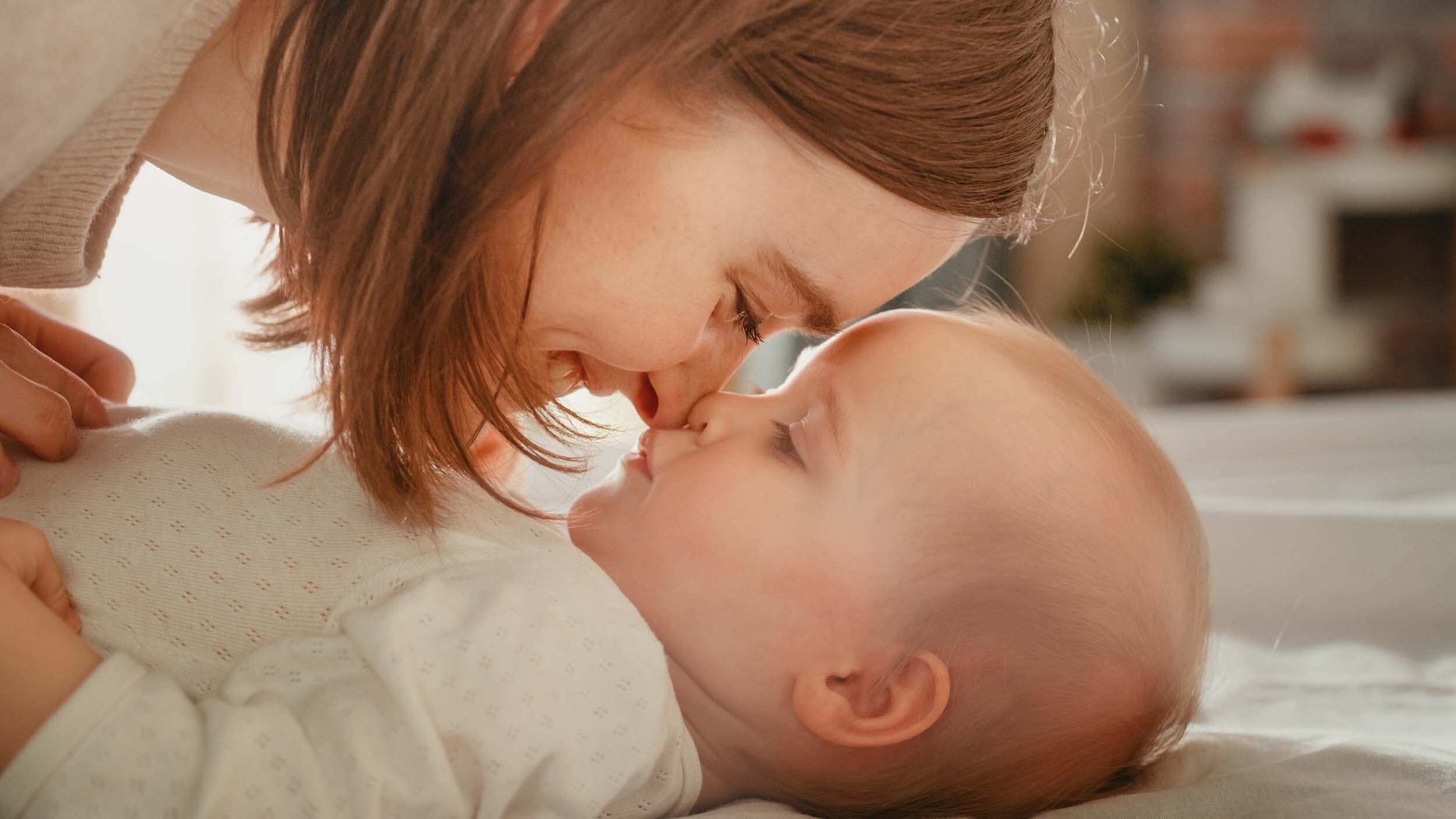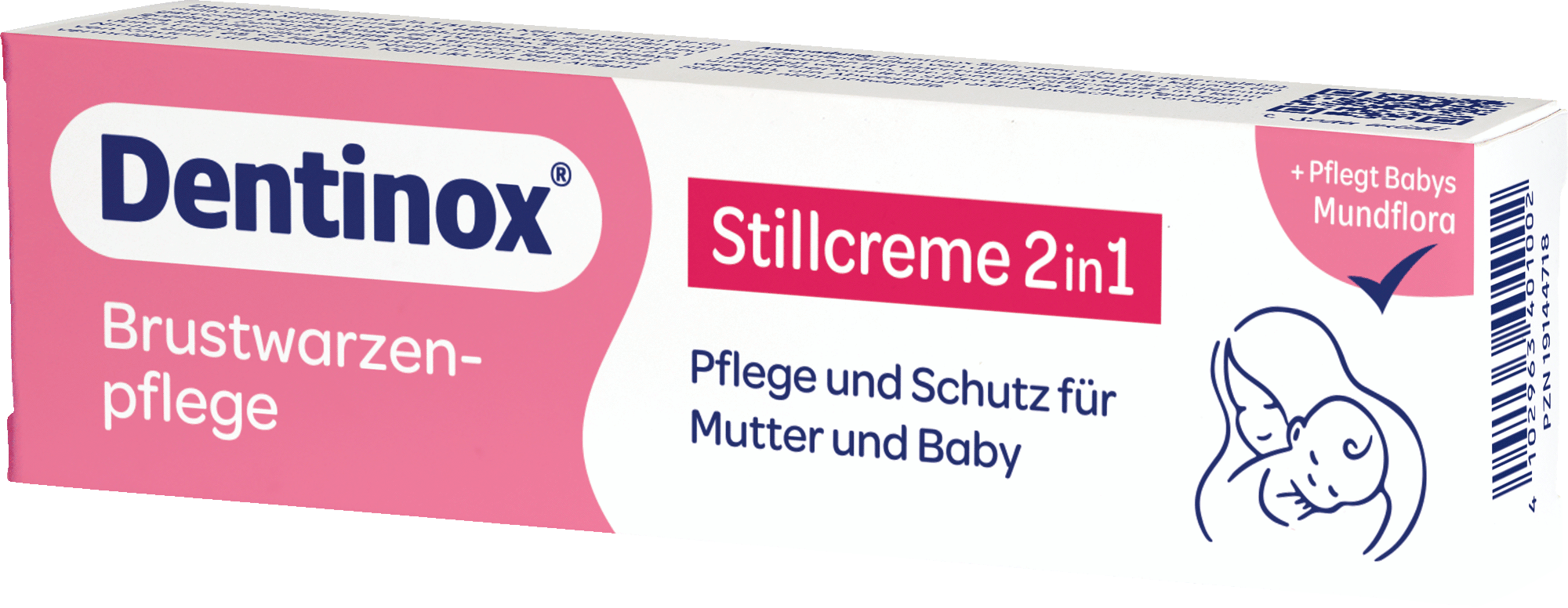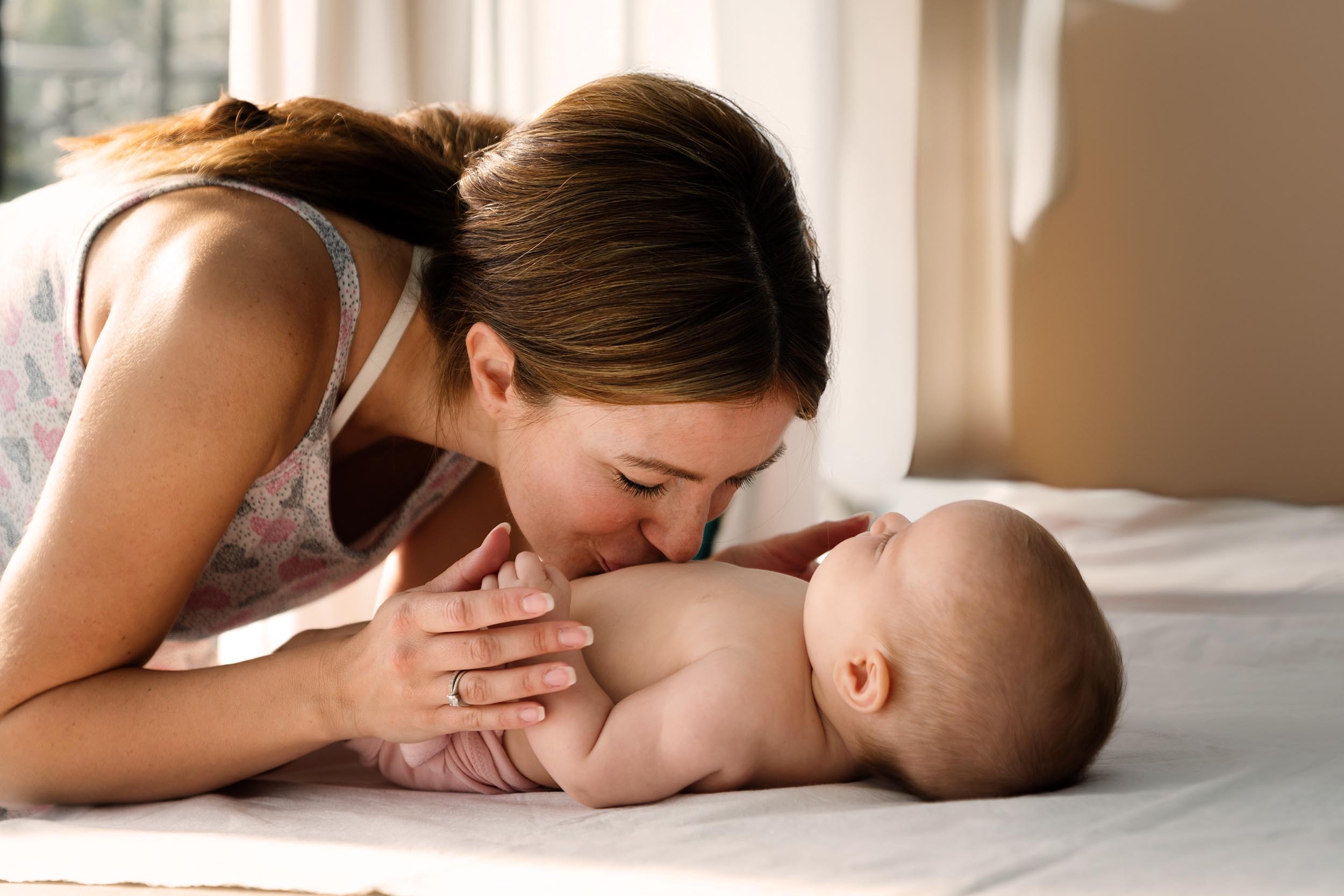A sore bottom on your baby can be really painful – not only for your baby, but also for you when you see your little one suffering. But don't worry, this happens more often than you think and there are many ways to help your baby. Let's take a look together at what exactly is behind a sore baby bum, how you can recognise it and what you can do to heal it quickly.
What is a sore bum?
A sore bum, also known as nappy rash, is an irritation of the skin in the nappy area. Unfortunately, this happens very often because your baby's skin is very sensitive and is irritated by the moisture in the nappy. If your baby has a sore bum, you will usually see redness and sometimes small pimples or open spots on the skin. Your baby may be restless and cry during nappy changes because it is in pain.
Causes of a sore baby bum
A sore bum can have various causes. Here are the most common ones:
- Moisture: If the nappy stays wet for too long, it can irritate the skin. Urine and faeces contain substances that can attack sensitive baby skin.
- Friction: A poorly fitting or too tight nappy can also irritate the skin and lead to a sore bottom.
- Sensitive skin: Some babies have particularly sensitive skin that reacts more quickly to external stimuli.
- Change of diet: Switching your baby from breast milk to solid food can change the bowel movements and irritate the skin.
- Infections: Sometimes a sore bottom can also be caused by a fungal infection. This is called nappy thrush.
What is nappy thrush?
Nappy thrush is a fungal infection caused by the yeast Candida. This fungus loves warm, moist environments – just like those provided by a nappy. Nappy thrush can be recognised by an intense, red rash, often with small red dots or pustules that spread over the nappy area. The rash can also be scaly and very uncomfortable for your baby.
Nappy thrush or nappy rash?
It can be difficult to distinguish between nappy rash and nappy thrush, as both show similar symptoms such as redness and skin irritation. However, there are some differences:
- Nappy rash: This often occurs when the skin remains moist for long periods of time, e.g. due to infrequent nappy changes or diarrhoea. The skin is red and irritated, but normally no blisters form.
- Nappy thrush: This is an infection caused by the yeast fungus Candida. Nappy thrush often occurs when the skin is already damaged by nappy dermatitis. The rash is more intense, often has sharply defined edges and small, fluid-filled pustules or scales may appear.
If you are unsure whether your baby has nappy thrush or nappy rash, it is a good idea to consult your paediatrician. An accurate diagnosis will help you to choose the right treatment and heal your baby's skin quickly.
How can I treat a sore bottom?
Fortunately, there are many simple and effective ways to treat a sore baby bum:
- Frequent nappy changes: Change your baby's nappy regularly to keep the skin dry. Ideally, the nappy should be changed as soon as it is wet or dirty.
- Air dry: Let your baby romp without a nappy as often as possible. The fresh air helps to dry and heal the skin. Lay your baby on a clean towel and just let them enjoy some time without a nappy.
- Gentle cleaning: Use warm water and a soft cloth to clean the nappy area. Avoid wet wipes with alcohol or fragrances, as these can irritate the skin. After cleansing, you should gently pat the skin dry and not rub it.
- Healing wool: Healing wool can be a wonderful support for sore bums. The natural wool contains lanolin, which has a soothing effect and promotes healing. Simply place a small piece of healing wool in the nappy so that it lies directly against the skin.
- Wound protection cream: Dentinox Zinc Ointment for nappy rash, which contains zinc oxide, can help to protect the skin and speed up healing. Apply the cream in a thin layer to the irritated skin.
- Fungal cream for nappy thrush: If you think your baby has nappy thrush, you should use an antifungal cream. You can get these at the pharmacy, and often just one or two applications can alleviate the symptoms.
When should I go to the doctor?
In most cases, you can treat a sore bum at home. But if you notice that the rash gets worse despite your best efforts, your baby gets a fever or blisters and pus develop, you should see a paediatrician. It is also advisable to consult a doctor if you suspect nappy thrush in order to receive the right treatment.
Prevention of a sore bottom
Of course, it is best to prevent a sore bottom from the outset. Here are some tips on how to protect your baby's sensitive skin:
- Change nappies often: Even if it's difficult at night, try to change your baby's nappy as often as possible.
- Use gentle products: Choose nappies that are breathable and absorb moisture well. Only use mild soaps and care products without additives.
- Allow air to reach the skin: Let your baby kick without a nappy as often as possible to allow the skin to breathe.
- Pay attention to your diet: If you are breastfeeding your baby and introducing new foods, do this gradually and observe how your baby's skin reacts.
Conclusion
A sore bum is uncomfortable, but with the right care and a few simple measures you can quickly help your baby to feel better. Remember that you are not alone – many parents have had this experience, and with a little patience and care, your baby's sore bum will soon be a thing of the past.









